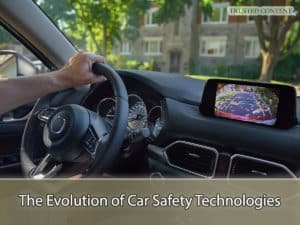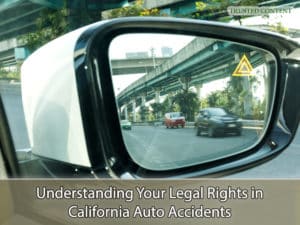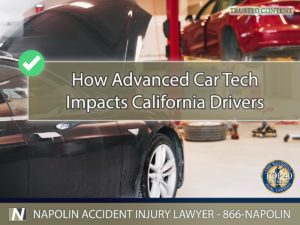How Advanced Car Technologies Impact California Drivers

The Evolution of Car Safety Technologies
The Evolution of Car Safety Technologies
The journey of automotive safety has been marked by continuous innovation and advancement. In California, where road safety is a top priority, the evolution of these technologies plays a critical role in safeguarding drivers and passengers. From the introduction of seat belts to the development of advanced driver-assistance systems, each technological leap has contributed significantly to reducing accidents and enhancing the overall safety of vehicles. This progress not only reflects the advancements in engineering and design but also the growing awareness of the importance of road safety in the state. As we move forward, these technologies are set to become even more sophisticated, further transforming the driving experience in California.
Blind Spot Detection (BSD)
Blind Spot Detection systems represent a major leap forward in vehicle safety technology. By alerting drivers to vehicles in their blind spots, these systems significantly reduce the risk of lane-change collisions, a common cause of accidents on California's busy highways. Utilizing advanced sensors and cameras, BSD systems provide real-time alerts, enhancing driver awareness and promoting safer driving practices. This technology is particularly beneficial in urban driving conditions where the density of traffic can lead to increased blind spot accidents. As such, BSD is becoming an essential feature for drivers in California, offering an extra layer of protection in diverse driving scenarios.
Automatic Emergency Braking (AEB)
Automatic Emergency Braking systems are a critical component in the modern driver's safety arsenal. By detecting potential collisions and automatically applying the brakes, AEB systems play a pivotal role in preventing accidents, especially in high-traffic areas like California's metropolitan regions. This technology is particularly effective in reducing the severity of rear-end collisions, which are among the most common types of accidents on the road. AEB systems not only enhance the driver's reaction time but also act as a secondary safety net, providing an additional layer of protection. The widespread adoption of AEB in new vehicles is a testament to its effectiveness in enhancing road safety in California.
Lane Departure Warning (LDW)
Lane Departure Warning systems have become increasingly important in preventing accidents caused by unintentional lane drifting. These systems utilize advanced sensors to monitor lane markings and alert drivers if their vehicle begins to veer out of the lane without signaling. In California, where long drives and highway commutes are common, LDW systems provide a crucial safety feature, reducing the risk of side-impact and head-on collisions. The alerts, which can be auditory, visual, or haptic, serve as an immediate reminder for drivers to adjust their position, thereby enhancing overall road safety. This technology is particularly beneficial in combating driver fatigue and distraction, two major causes of lane departure accidents.
Adaptive Cruise Control (ACC)
Adaptive Cruise Control is a game-changer in the realm of driving technologies. By automatically adjusting the vehicle's speed to maintain a safe distance from the car ahead, ACC not only enhances comfort during long drives but also plays a significant role in preventing accidents. In California's varied driving environments, from congested urban areas to open highways, ACC helps in maintaining consistent traffic flow and reducing the chances of rear-end collisions. This technology, which uses radar and cameras to monitor traffic conditions, is a prime example of how automation can contribute to safer driving experiences.
Rear Cross Traffic Alert (RCTA)
Rear Cross Traffic Alert systems are a vital safety feature for urban and suburban drivers in California. These systems alert drivers to approaching vehicles from the side while reversing, a common scenario in parking lots and driveways. With the help of sensors and cameras, RCTA increases the driver's awareness of their surroundings, thereby helping to avoid potential collisions. This technology is particularly useful in busy parking areas where visibility is often limited, and the risk of accidents is high. By providing timely alerts, RCTA enhances driver confidence and safety during one of the most challenging aspects of driving.
Driver Drowsiness Detection
Driver Drowsiness Detection systems address a critical aspect of road safety – driver fatigue. By monitoring indicators of drowsiness such as steering patterns, eye movement, and facial expressions, these systems can alert drivers to take a break, thereby reducing the risk of fatigue-related accidents. In California, where long-distance driving is common, this technology is a key factor in preventing accidents caused by driver fatigue. The system's ability to detect early signs of drowsiness and prompt drivers to rest is an invaluable tool in promoting safer driving practices across the state.
Electronic Stability Control (ESC)
Electronic Stability Control is a vital safety feature designed to assist drivers in maintaining control of their vehicle during challenging driving conditions. ESC detects when a vehicle is losing traction or beginning to skid and automatically applies brakes to individual wheels to help stabilize the vehicle. In California, where drivers may encounter a variety of road conditions, from wet coastal highways to winding mountain roads, ESC is particularly beneficial. This technology enhances vehicle stability, reduces the risk of skidding, and improves safety during sudden maneuvers or in adverse weather conditions. ESC's role in preventing accidents and improving driver confidence makes it a crucial component of modern vehicle safety systems.
Tire Pressure Monitoring System (TPMS)
The Tire Pressure Monitoring System is an essential safety feature that continuously monitors the air pressure in a vehicle's tires. Proper tire pressure is crucial for maintaining optimal vehicle performance, fuel efficiency, and safety. In California, with its diverse terrain and climate conditions, maintaining the correct tire pressure is vital for safe driving. TPMS alerts drivers to any significant under-inflation, allowing them to address the issue promptly. This not only extends tire life but also reduces the risk of tire-related accidents, ensuring a safer driving experience.
Parking Assistance Systems
Parking Assistance Systems have revolutionized the way drivers approach the often-daunting task of parking. Utilizing sensors, cameras, and sometimes automated steering, these systems assist drivers in safely maneuvering their vehicles into parking spots. In California's crowded urban areas, where parking can be a challenge, these systems are particularly useful. They reduce the stress associated with parking in tight spaces and minimize the risk of parking-related accidents. Whether it's parallel, perpendicular, or angled parking, these systems enhance driver confidence and safety.
Connected Car Features
Connected Car Features represent the integration of technology and convenience in modern vehicles. These features allow drivers to connect their smartphones to the vehicle's system, providing access to navigation, messaging, entertainment, and more. In California, where technology plays a significant role in daily life, connected car features enhance the overall driving experience. They offer hands-free access to essential functions, real-time traffic updates, and entertainment options, all while promoting safer driving practices.

Understanding Your Legal Rights in California Auto Accidents
Understanding Your Legal Rights in California Auto Accidents
In the event of an auto accident, understanding your legal rights is crucial. California's laws and regulations provide specific protections for drivers, especially in cases involving advanced car technologies. Being informed about these rights is essential for any driver in the state. It ensures that in the unfortunate event of an accident, you are equipped with the knowledge to navigate the legal landscape effectively.
The Importance of Legal Assistance in Auto Accident Cases
In the complex world of auto accident claims, especially those involving advanced technologies, legal assistance is invaluable. An experienced attorney can provide guidance, help interpret the implications of these technologies in your case, and ensure that your rights are fully protected. In California, where the legal system can be daunting, having a knowledgeable legal advocate is essential for achieving a fair and just outcome in any auto accident claim.
Technology's Influence on Legal Outcomes
The presence of advanced safety technologies in vehicles can significantly influence the legal outcomes in auto accident cases. These technologies can provide crucial evidence in determining liability and compensation, making them an important factor in legal proceedings. In California, where technology is often at the forefront of legal considerations, understanding how these features can impact your case is crucial.
Tips for California Drivers: Utilizing Safety Technologies
For California drivers, effectively utilizing car safety technologies is key to ensuring a safe driving experience. Familiarizing yourself with your vehicle's safety features and understanding how to use them effectively can make a significant difference in preventing accidents. Additionally, staying informed about the legal considerations related to these technologies is crucial for responsible and safe driving in the state.

How Advanced Car Technologies Impact California Drivers
How Advanced Car Technologies Impact California Drivers
As we navigate the roads of California, understanding the impact of advanced car technologies and our legal rights is more important than ever. If you find yourself in need of legal assistance following an auto accident, Napolin Accident Injury Lawyer is here to help. With our extensive experience and commitment to our clients, we provide comprehensive legal support to those affected by auto accidents. Contact us at (866)-NAPOLIN for a free consultation and let us guide you through your legal journey with expertise and compassion.
- A Guide on Red Light Auto Accidents in California - August 14, 2024
- Self-Representing in a California Personal Injury Claim - August 13, 2024
- Common Sources of Distraction for Drivers in California - August 13, 2024
